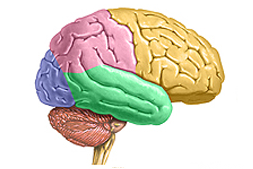A Traumatic brain injury, or TBI, includes a wide range of injuries with a broad spectrum of symptoms and possible disabilities. Many times the wider range impacts cannot be noted until later on if the accident occurs when the child is very small. The following are some basic facts about a Traumatic Brain Injury:
Definitions
An injury that is caused by an external physical force, which leads to an impairment in one or more areas of functioning and can cause delays/ difficulty with educational performance.
Causes
There are both open and closed head injuries. Open are caused by penetration of an object to the head, and closed are when a blunt stationary object hits the head resulting in the brain slamming into the cranium.
Characteristics
There is a wide range of characteristics, which may be permanent or temporary. They include:
- physical and sensory change
- cognitive impairments
- social, behavioral, and emotional problems
Education
As each injury is different, so are the impacts and the child’s needs. It is important as an educator to truly understand each individual child, so that the child can truly benefit from their education by having an environment that catered to them. This also means being aware of any challenges the child seems to be having learning or manipulating their environment to meet their needs.
Parenting
Again each case is so individual. Listen to the doctors and your own heart. If something doesn’t seem right, pursue it. You are your child’s most important advocate. This means to educate yourself on your individual child’s needs and follow your intuition on what needs you see so that your child can get any additional help needed. This may range from physical therapy, speech, therapy, occupational therapy to help in academics.
Other Resources
Here’s a great spot on CNN about Children and Severe Traumatic Brain Injury
